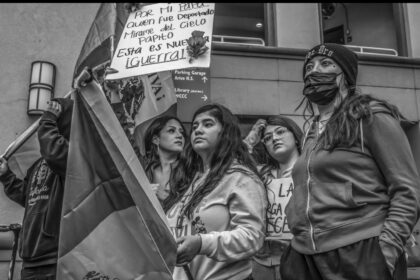Umuganura, Rwanda’s national harvest day celebrated on the first Friday of August, stands out as the only traditional event officially recognized on the national calendar, highlighting its deep cultural and historical significance.
ALSO READ: Umuganura, a feast that brings Rwandans to the heart of their nation
A number of Rwandans view the event as a celebration centered on sharing food. However, its history reveals a deeper meaning–one rooted in unity, gratitude, and national values. In an interview with The New Times, Amb Robert Masozera, the Director General of Rwanda Cultural Heritage Academy, shed light on its historical significance.
ALSO READ: Umuganura and the values behind it
The excerpts:
Please explain what Umuganura is, its origin, the role of kings and local communities in the ceremony.
Umuganura was the most significant pre-colonial celebration which was led by the king and Abiru who were a group of royal ritualists who served as a privy council to the Rwandan monarchy at national level, and by family heads within households.
The king officially launched the event, while the ceremony was mainly coordinated by Abiru, his royal advisors, and the location of the ceremony was decided by the king and the royal palace.
Umuganura is believed to have originated during Rwanda’s founding under King Gihanga Ngomijana, and was later formalized by King Ruganzu II Ndori, who used it to reunite the nation after foreign rule and to strengthen national identity.
Umuganura, derived from the verb Kuganura, meaning to eat and share the harvest, is a deeply rooted cultural practice in Rwanda that goes beyond mere celebration.
What key rituals and activities were traditionally performed during Umuganura?
It was a comprehensive, annual ceremony that involved a series of structured rituals reflecting Rwanda’s agricultural life and spiritual connection to the land.
The festival typically began in August and extended into the following year, sometimes up to June.
The first stage, kwaka amasuka i bwami (requesting for hoes at the palace) done in August, involved farmers requesting for hoes and blessings from the king to begin cultivation. This was followed by guturutsa imbuto, which was done in September. It was the ritual of sowing seeds–primarily millet and sorghum, Rwanda’s staple crops.
In January or sometimes March, communities would perform kujyana umurorano i bwami (offering the first harvest to the royal court). Sorghum was ground into bread, shared in four parts, placed in a special container, and eaten by traditional priests, Intarindwa, along with a special type of beans named (Ibiharo). This highlights sorghum’s historic importance before finger millet arrived in Rwanda.
kujya kuzana igitenga i bwami was the fourth stage, done in early February. The umwiru wo kwa Myaka (royal priest) from Huro (a sacred place where important traditional rituals were prepared or performed for the king), would go to the palace to bring a large basket called igitenga, used to hold the grains intended for the Umuganura ceremony.
Although the exact details are not well known, there were rituals performed beforehand on the igitenga, after which it was taken to Huro in Bumbogo (place where the ritual planting and cultivation associated with Umuganura ceremony took place). Once there, the abiru would ensure the grains were properly filled in the basket, then return it to the royal court containing sorghum and finger millet.
The final stage of Umuganura was kwakira amasaka n’uburo, kuvuga umutsima no kuganura (receiving finger millet and sorghum, preparing the traditional bread and performing the thanksgiving ceremony).
At the royal court, rituals were held to receive the harvest. The grains were ground, and the bread was prepared and divided into four portions. On the day of the ceremony, the king himself and other dignitaries were present. The king would be offered milk and begin the ceremony by tasting the traditional bread(umutsima).
Umuganura was more than a harvest celebration because it embodied core Rwandan values such as gratitude (ishimwe), self-reliance (kwigira), giving back (kwitura), generosity (kuremera), and respect for the nation and its leadership.
How did colonization affect the celebration of Umuganura? When and why was Umuganura revived in modern Rwanda?
During the colonial period, the Belgian administration abolished Umuganura under the reign of King Yuhi V Musinga, viewing it as a threat to their authority. This was part of a broader effort to undermine Rwanda’s traditional institutions, which ultimately led to the king being exiled in 1925 and the disruption of a key cultural tradition.
The abolition of Umuganura during colonial rule had a deep negative cultural impact as it was replaced by foreign religious practices.
A Kinyarwanda saying, ‘Ntukavange amasaka n’amasakarameno’ (don’t mix finger millet with sacraments), emerged to reflect the clash between traditional values; amasaka representing tradition such as Umuganura and colonial religious sacraments (amasakarameno). This shift weakened national unity, fostering division and conflict. As King Ruganzu II Ndoli once said, ‘a Rwanda without Umuganura is no longer Rwanda’. This underscored its significance to the nation’s identity.
In the early 1980s, former Rwandan president Juvenal Habyarimana’s regime revived Umuganura and declared it a national day. However, the revival lacked cultural depth, as the festival was reduced to a social event focused on food and drink, straying from its traditional spiritual and unifying purpose.
Though interrupted by conflict in the 1990s, Umuganura was officially revived in 2011, with the first Friday of August, which was declared as a national holiday to reflect on achievements, reinforce national identity, unity, and patriotism.
How has Umuganura adapted to modern times while keeping its traditional meaning?
Historically, Umuganura was centred on agriculture and livestock, with the king, council, and ritual leaders playing key roles in the celebration.
Today, while the context has evolved to include achievements in various sectors and the presence of modern institutions like the Head of State, the spirit of Umuganura remains unchanged. The values of hard work, generosity, hospitality, and sharing continue to define the celebration. Aligned with Rwanda’s fiscal year, which begins in July, Umuganura symbolizes planning, sowing, and harvesting–reflecting both cultural tradition and national development.
What does Umuganura teach us about Rwandan identity and unity?
Rwandan identity goes beyond physical borders–it is about shared values, culture, and belonging.
This is why Rwandans in the diaspora are encouraged to celebrate Umuganura, as a way to stay connected to their roots. Although identity is intangible, it is reflected through unity, cultural practices, gratitude, and values expressed during Umuganura.




